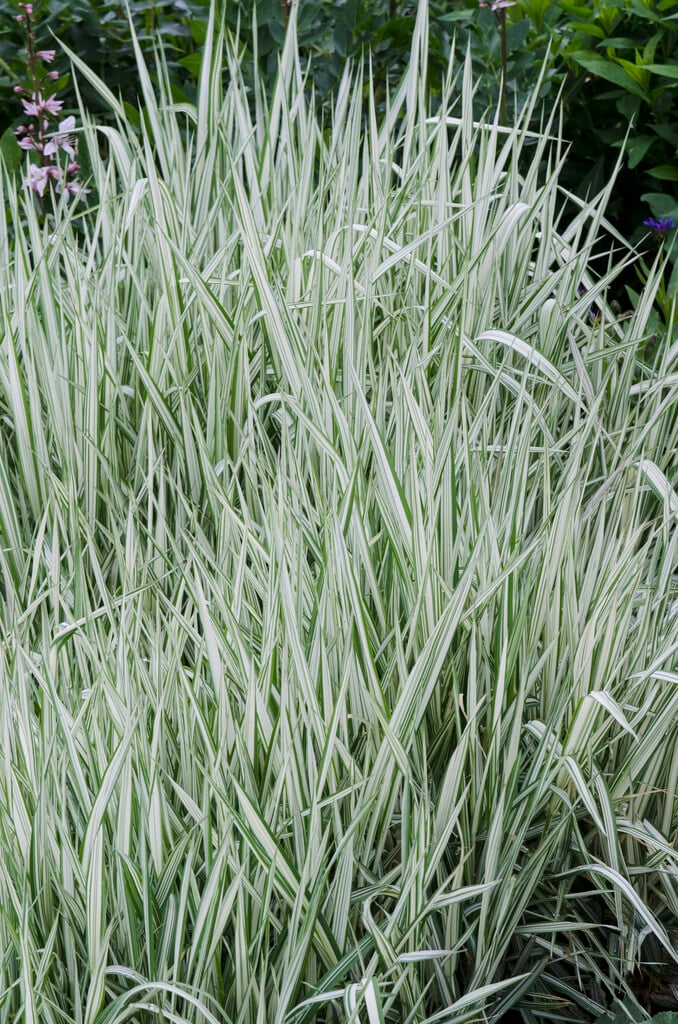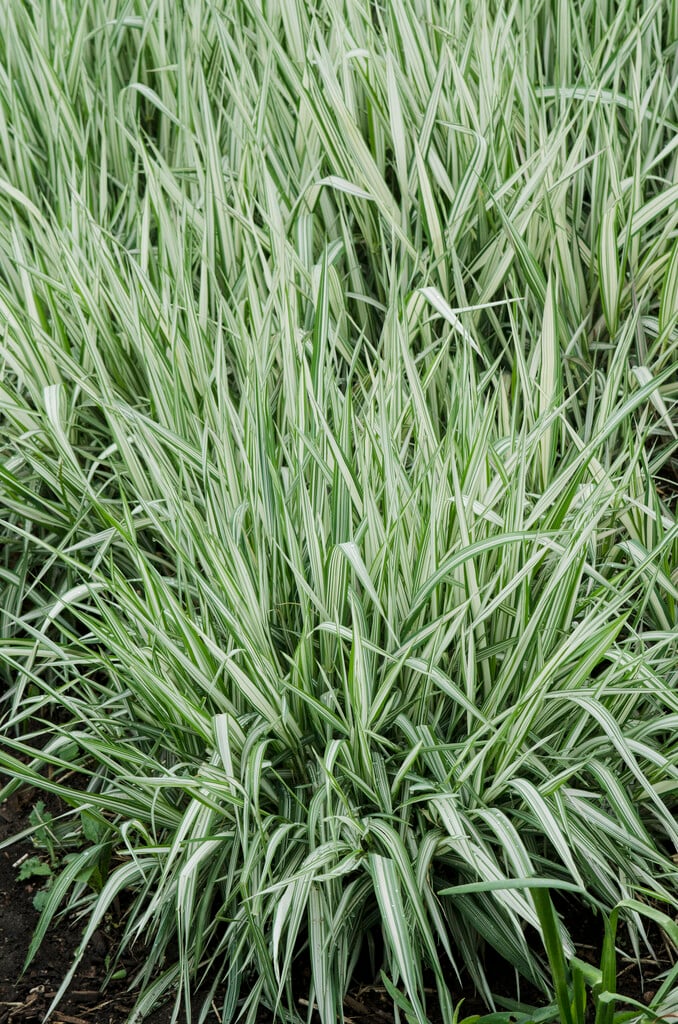Phalaris arundinacea
reed canary grass
Vigorous perennial grass with a running rootstock, forming an extensive colony of upright stems, to 1.5m tall in flower, bearing narrow, linear, mid-green leaves to 35cm long, and narrow panicles to 17cm long of pale green flower spikelets in summer
Size
Ultimate height
1–1.5 metresTime to ultimate height
5–10 yearsUltimate spread
Wider than 8 metresGrowing conditions
Moisture
Well–drainedpH
Acid, Alkaline, NeutralColour & scent
| Stem | Flower | Foliage | Fruit | |
| Spring | Green | |||
|---|---|---|---|---|
| Summer | Green | Green | ||
| Autumn | Green | |||
| Winter |
Position
- Full sun
- Partial shade
Aspect
East–facing or South–facing or West–facing
Exposure
Exposed or Sheltered Hardiness
H7Botanical details
- Family
- Poaceae
- Native to GB / Ireland
- Yes
- Foliage
- Evergreen
- Habit
- Tufted
- Genus
Phalaris can be annual or rhizomatous perennials grasses with relatively broadly linear leaves and small green flower spikelets in open panicles
- Name status
Correct
- Plant range
- N & S temp. regions
How to grow
Cultivation
Grow in any soil in full sun or partial shade. Can spread quickly, so suited to covering large areas, but has the potential to become a nuisance and may need to be controlled
Propagation
Propagate by division from mid-spring to midsummer
Suggested planting locations and garden types
- Cottage and informal garden
- Ground cover
Pruning
Cut back dead foliage in spring
Pests
Generally pest-free
Diseases
Generally disease-free
Love gardening
Sign up to receive regular gardening tips, inspiration, offers and more
View our Privacy Policy
Get involved
The Royal Horticultural Society is the UK’s leading gardening charity. We aim to enrich everyone’s life through plants, and make the UK a greener and more beautiful place.

